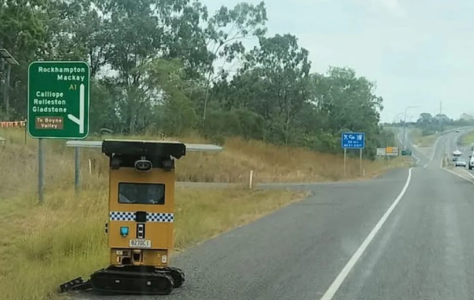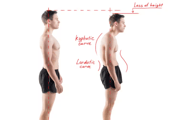Secret speed camera feature catches drivers faces $1800 fine
By
Gian T
- Replies 0
If you’ve ever driven through a roadworks zone and breathed a sigh of relief because there were no workers in sight, you might want to think again before putting your foot down.
A new breed of speed camera is quietly catching thousands of Aussie drivers—and the fines are nothing to sneeze at, with some reaching a whopping $1,800!
So, what’s the deal with these sneaky cameras, and why are so many motorists getting caught out? Let’s break it down.
You might have noticed a strange, solar-powered device perched on a mobile platform by the side of the road, especially in areas with ongoing roadworks.
These aren’t your average speed cameras—they’re called Roadways Behaviour Monitoring Systems (RBMS), and they’re designed to be moved around easily and operated remotely.
Remote-controlled solar-powered speed cameras are being used across Queensland roadworks to enforce speed limits at all times. Credit:
Their main job is to keep both road workers and drivers safe by enforcing speed limits 24/7, whether or not there are workers present.
A Queensland driver recently spotted one of these cameras on the A1 and called it 'cheeky', sparking a heated debate about whether these cameras are more about safety or revenue-raising.
But authorities are clear: the cameras are here to stay, and the fines are real.
Here’s where it gets serious. In Queensland, if you’re caught speeding less than 11km/h over the limit, you’ll be hit with a $322 fine.
But if you’re caught going 40km/h or more over the limit, you could be staring down the barrel of a massive $1,845 fine.
And with fines set to increase by 3.5 per cent in the new financial year, those numbers are only going up.
These cameras started issuing fines in April last year after a two-year trial, and they’re now a common sight at roadworks across the state.
They’re designed to be hard to spot, so don’t count on seeing them in time to slow down!
It’s a question many drivers ask: if there are no workers around, why do the speed limits (and the cameras) still apply?
According to Transport and Main Roads, the answer is simple—roadworks zones are full of hazards, even when the workers have clocked off for the day.
There could be changed road alignments, narrow lanes, loose gravel, or other dangers that make speeding especially risky.
RACQ spokesperson Gregory Miszkowycz explains: 'It’s important to slow down and obey the speed limit as these sites often have road workers within close proximity of traffic as well as other hazards for drivers, including road alignment changes, narrow lanes and loose surfaces.'
Sadly, the need for these cameras is backed up by some sobering statistics. In 2024, Queensland recorded its highest road toll in 15 years, with 303 people killed.
Last year, 1,300 lives were lost on roads across the country, with the same risky behaviours repeatedly contributing to fatal crashes.
Known as the ‘Fatal 5’, these include speeding, drink and drug driving, driving while distracted or tired, and not wearing a seatbelt.
Authorities and motoring groups are urging all drivers to take these risks seriously—not just for their own sake but for the safety of everyone on the road, including the families of road workers.
RACQ is calling for more visible police patrols, increased random roadside testing, and more point-to-point speed cameras in high-risk areas.
They’re also pushing for tougher penalties for the state’s most dangerous drivers, including expanded laws for impounding or immobilising vehicles.
Transport and Main Roads adds: 'Somebody’s family member may be working in these environments, and they want to get home safely.
Slowing down, adhering to the speed limit, staying alert, driving to conditions, and following directions from traffic controllers will help ensure everyone gets home safely to their families.'
If you’re driving through a roadworks zone—no matter the time of day and whether or not you see workers—stick to the posted speed limit.
These new cameras don’t take a break, and neither do the fines.
Remember, it’s not just about avoiding a hefty penalty; it’s about keeping everyone safe.
 Have you had a close call with a sneaky speed camera, or do you think they’re a necessary part of keeping our roads safe? Share your stories and opinions in the comments below.
Have you had a close call with a sneaky speed camera, or do you think they’re a necessary part of keeping our roads safe? Share your stories and opinions in the comments below.
A new breed of speed camera is quietly catching thousands of Aussie drivers—and the fines are nothing to sneeze at, with some reaching a whopping $1,800!
So, what’s the deal with these sneaky cameras, and why are so many motorists getting caught out? Let’s break it down.
You might have noticed a strange, solar-powered device perched on a mobile platform by the side of the road, especially in areas with ongoing roadworks.
These aren’t your average speed cameras—they’re called Roadways Behaviour Monitoring Systems (RBMS), and they’re designed to be moved around easily and operated remotely.
Remote-controlled solar-powered speed cameras are being used across Queensland roadworks to enforce speed limits at all times. Credit:
Their main job is to keep both road workers and drivers safe by enforcing speed limits 24/7, whether or not there are workers present.
A Queensland driver recently spotted one of these cameras on the A1 and called it 'cheeky', sparking a heated debate about whether these cameras are more about safety or revenue-raising.
But authorities are clear: the cameras are here to stay, and the fines are real.
Here’s where it gets serious. In Queensland, if you’re caught speeding less than 11km/h over the limit, you’ll be hit with a $322 fine.
But if you’re caught going 40km/h or more over the limit, you could be staring down the barrel of a massive $1,845 fine.
And with fines set to increase by 3.5 per cent in the new financial year, those numbers are only going up.
These cameras started issuing fines in April last year after a two-year trial, and they’re now a common sight at roadworks across the state.
It’s a question many drivers ask: if there are no workers around, why do the speed limits (and the cameras) still apply?
According to Transport and Main Roads, the answer is simple—roadworks zones are full of hazards, even when the workers have clocked off for the day.
There could be changed road alignments, narrow lanes, loose gravel, or other dangers that make speeding especially risky.
RACQ spokesperson Gregory Miszkowycz explains: 'It’s important to slow down and obey the speed limit as these sites often have road workers within close proximity of traffic as well as other hazards for drivers, including road alignment changes, narrow lanes and loose surfaces.'
Sadly, the need for these cameras is backed up by some sobering statistics. In 2024, Queensland recorded its highest road toll in 15 years, with 303 people killed.
Known as the ‘Fatal 5’, these include speeding, drink and drug driving, driving while distracted or tired, and not wearing a seatbelt.
Authorities and motoring groups are urging all drivers to take these risks seriously—not just for their own sake but for the safety of everyone on the road, including the families of road workers.
RACQ is calling for more visible police patrols, increased random roadside testing, and more point-to-point speed cameras in high-risk areas.
They’re also pushing for tougher penalties for the state’s most dangerous drivers, including expanded laws for impounding or immobilising vehicles.
Transport and Main Roads adds: 'Somebody’s family member may be working in these environments, and they want to get home safely.
If you’re driving through a roadworks zone—no matter the time of day and whether or not you see workers—stick to the posted speed limit.
These new cameras don’t take a break, and neither do the fines.
Remember, it’s not just about avoiding a hefty penalty; it’s about keeping everyone safe.
Key Takeaways
- Remote-controlled, solar-powered speed cameras (Roadways Behaviour Monitoring Systems) are being used across Queensland roadworks to enforce speed limits 24/7, even when workers are not present.
- Fines for speeding through these zones are significant, with penalties starting at $322 for less than 11km/h over the limit and reaching $1,845 for 40km/h over, with increases set for the next financial year.
- The main goal of these cameras is to protect roadside workers and address dangerous driving behaviours, as Queensland recently recorded a 15-year high road toll.
- Authorities and motoring groups are urging drivers to slow down, obey speed limits, and change their attitudes towards speeding to reduce road trauma and fatalities, particularly in roadwork zones.








